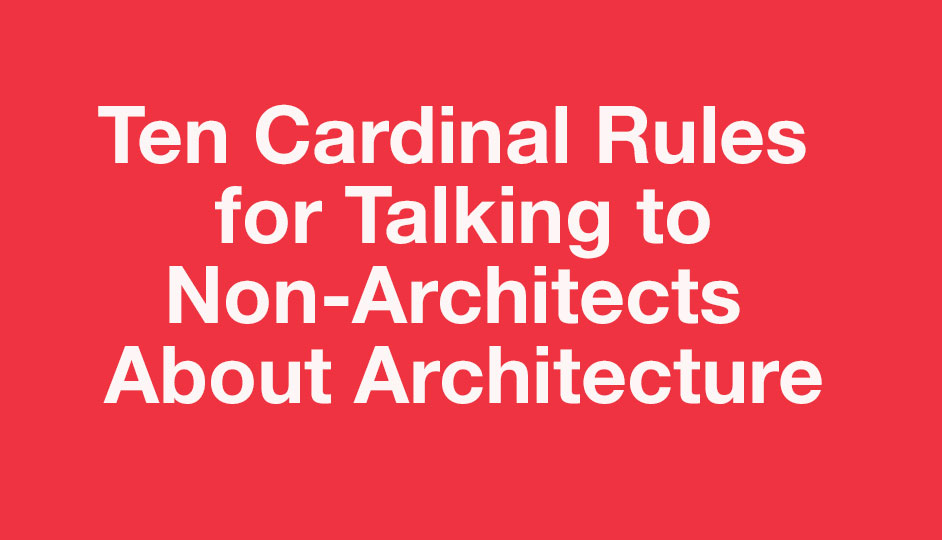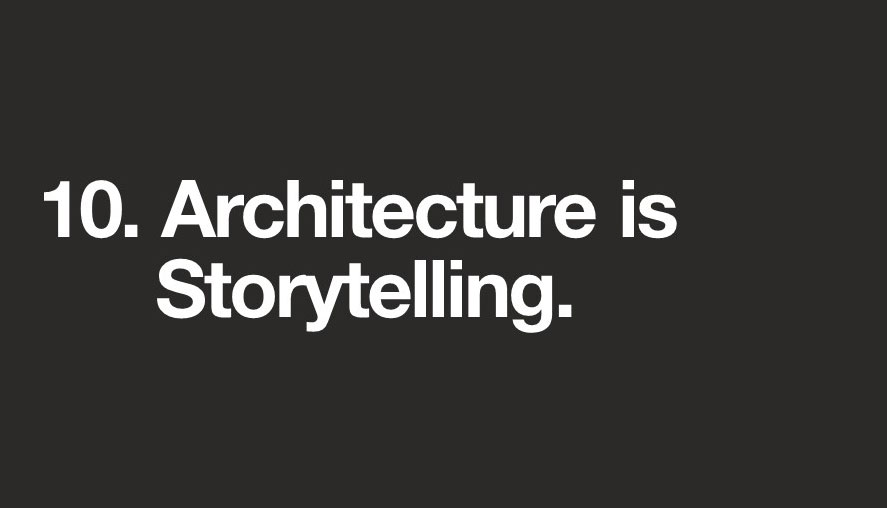











Ten Cardinal Rules for Talking to Non-Architects
Larry Speck has a storied career, and is still going strong. He is a Senior Principal at a multidisciplinary firm that is ranked among the top A/E firms in the US according to industry publications; his work has won numerous awards; he is published; he served as the Dean of the School of Architecture at the University of Texas (UT) at Austin where he still teaches and he works on fascinating projects for Fortune 500 entities, major government agencies and comparable clients. Yet, he still envies people in other industries, such as the culinary arts.
Larry explained at a recent 8:00am Saturday morning presentation with over 100 attendees that over time, he has come to realize that the public perception of architecture as a career doesn’t quite align with reality. Even though the average American spends 95% of their time inside a built environment, people still perceive architecture as esoteric or almost incomprehensible. Yet, the very same people who back away or glaze over when they meet an architect can speak knowledgeably – and excitedly - about food such as different types of root vegetable preparation, nutritional content and palate compatibility.
He exhorted the architects in attendance to take cues from chefs and wait staff who take the time to explain to diners what their options are, what they are about to experience and how it’s prepared. Larry knows of what he speaks – he teaches the single most popular elective course at UT geared toward non-architecture majors titled “Architecture in Society”. According to the UT registrar, approximately 1 of 12 undergraduates takes this course, for a total of 16,000 students to date. And he still offers it. Additionally, he is a Topaz Medallion recipient, the highest honor given to an architectural educator from the American Institute of Architects (AIA) and the Association of Collegiate Schools of Architecture (ACSA).
The Saturday morning presentation was titled “Ten Cardinal Rules for Talking to Non-architects About Architecture” and is a combination of anecdotes, observations and statistics to help architects understand how to better convey what they do. His starting advice is, “Just do it – start talking.” While the above image gallery of rules with accompanying captions doesn't convey the stories that kept his audience riveted – and laughing in acknowledgement of what we’ve all seen and heard ourselves - it should motivate you to sign up for any opportunity you may find to attend this talk.
01/14/2015








